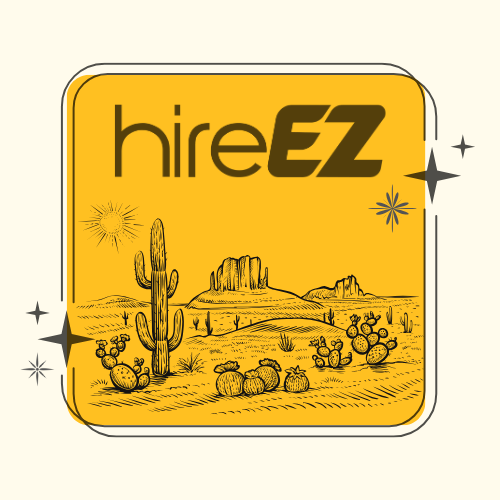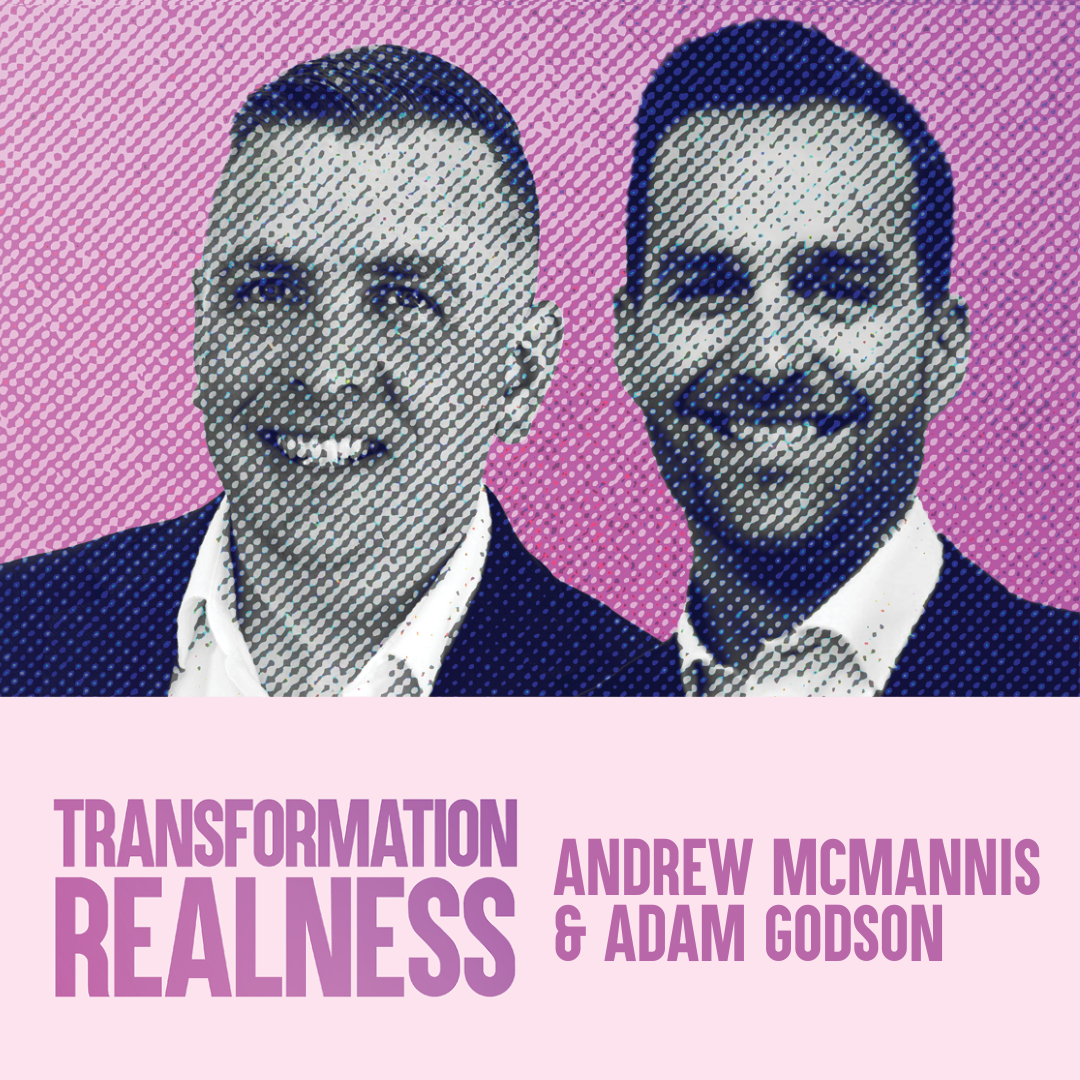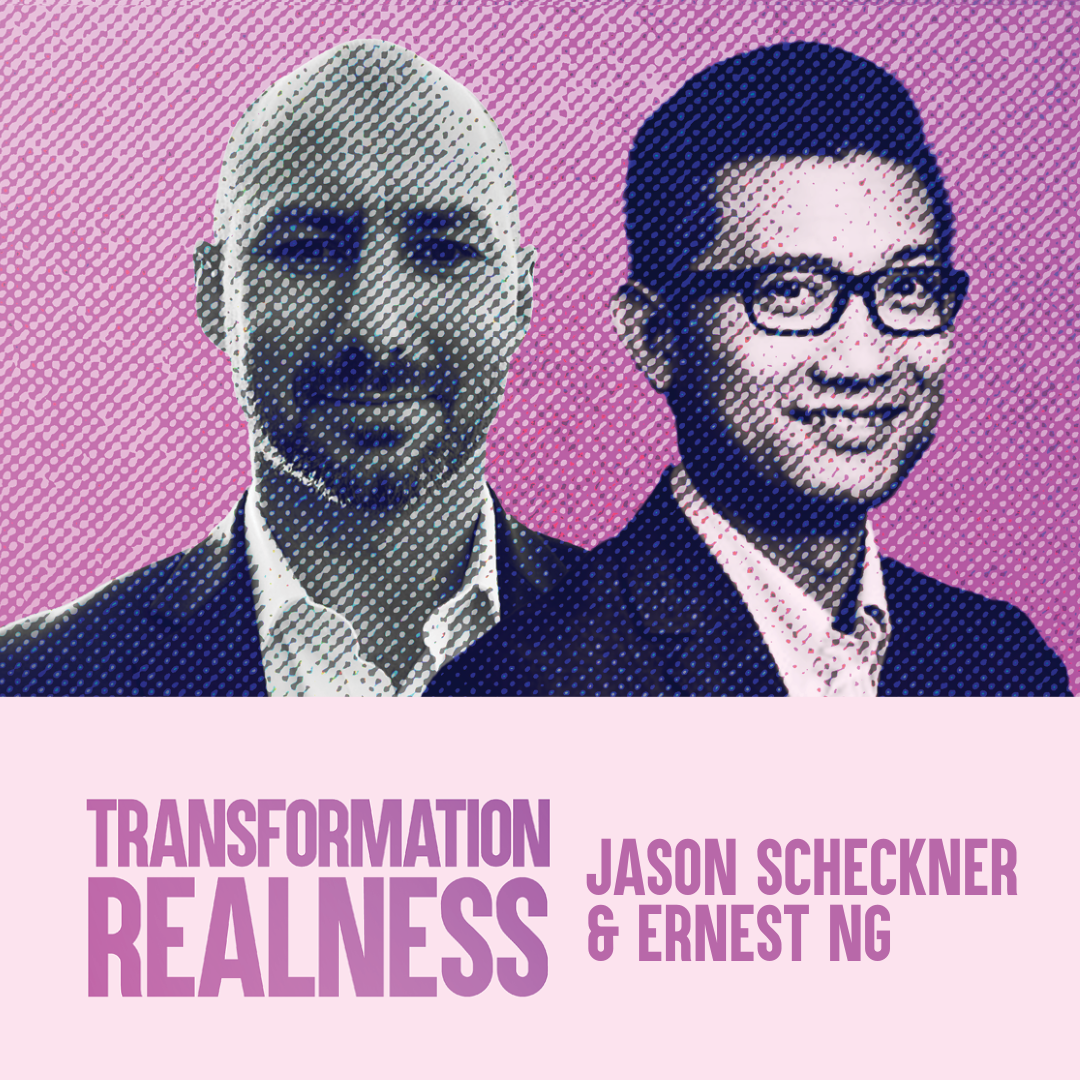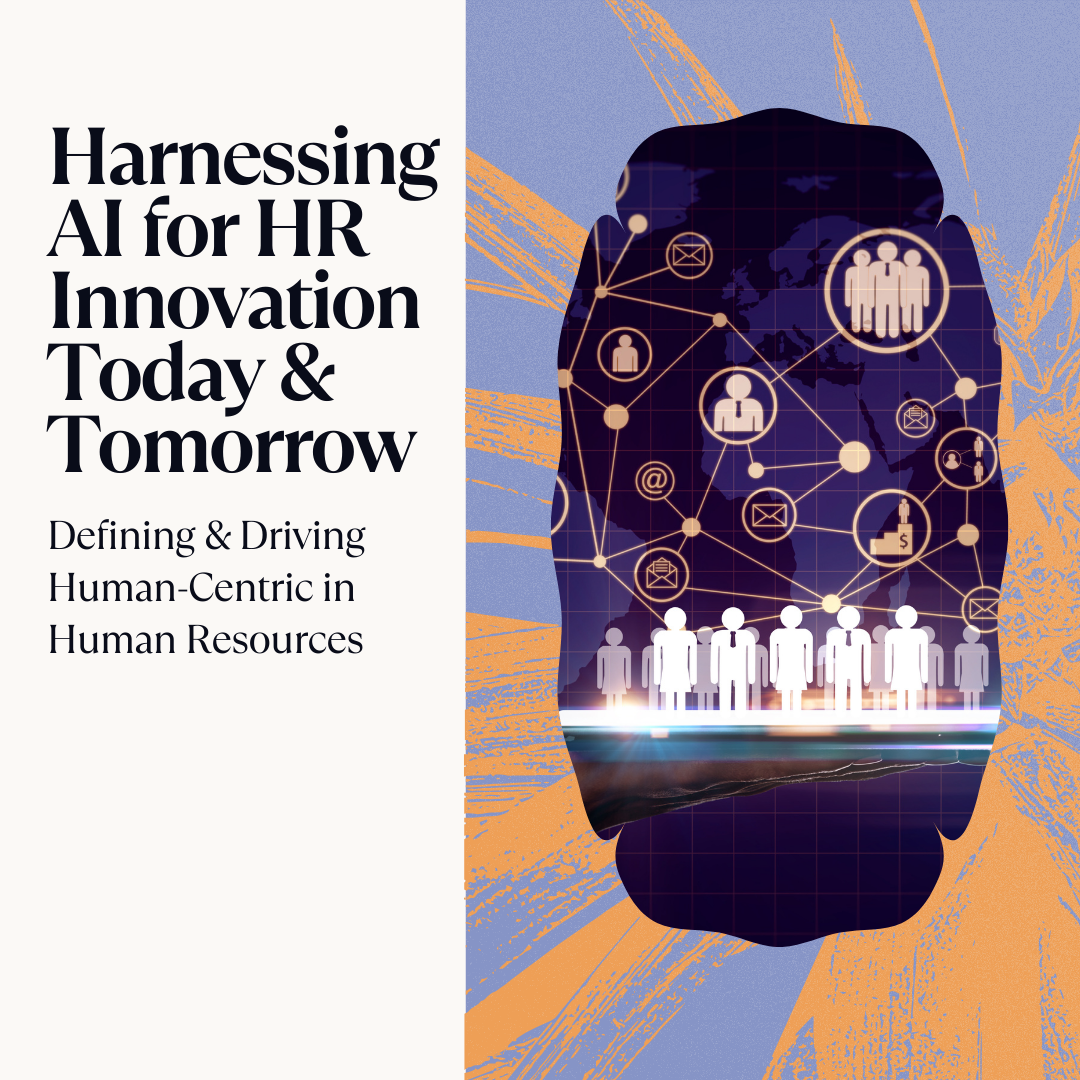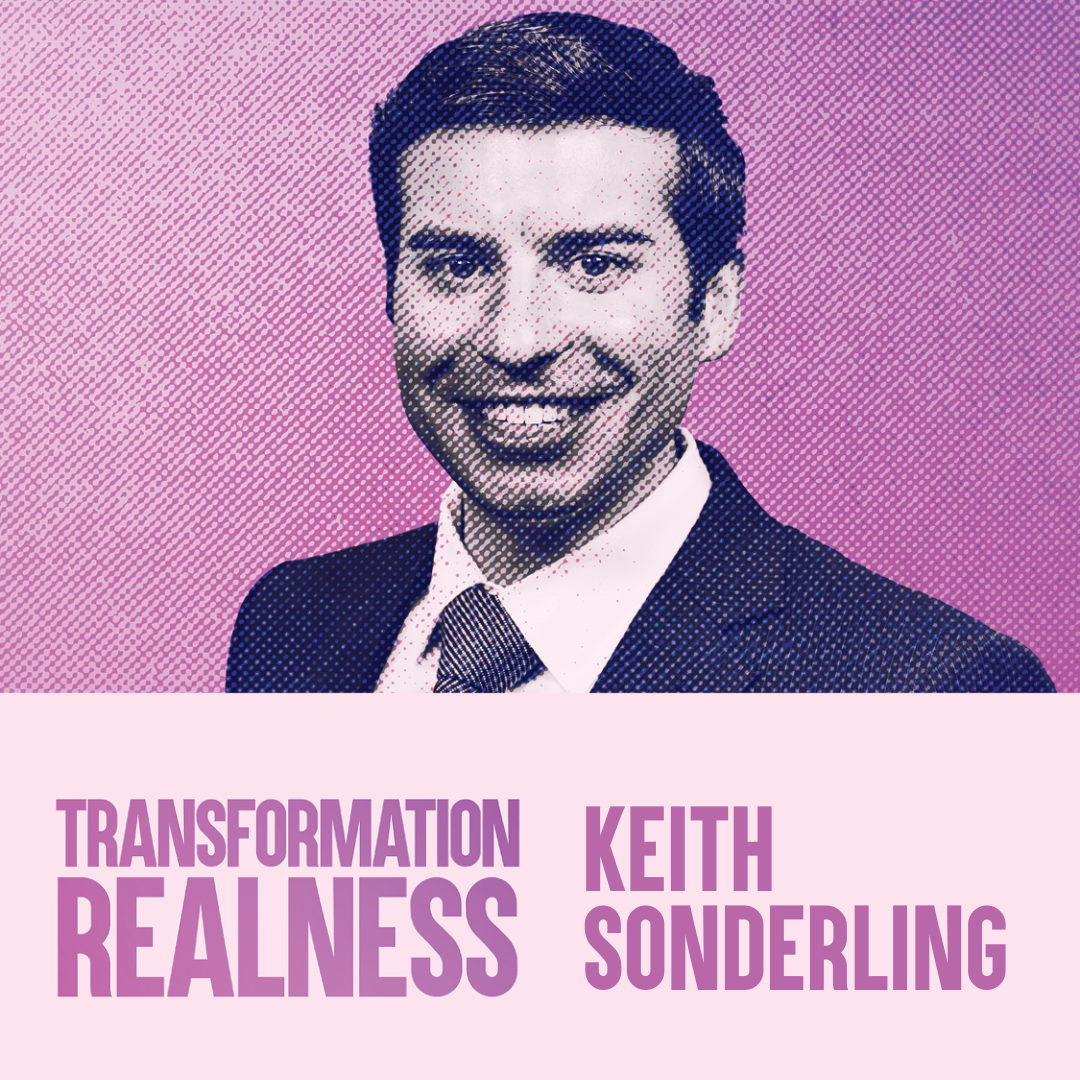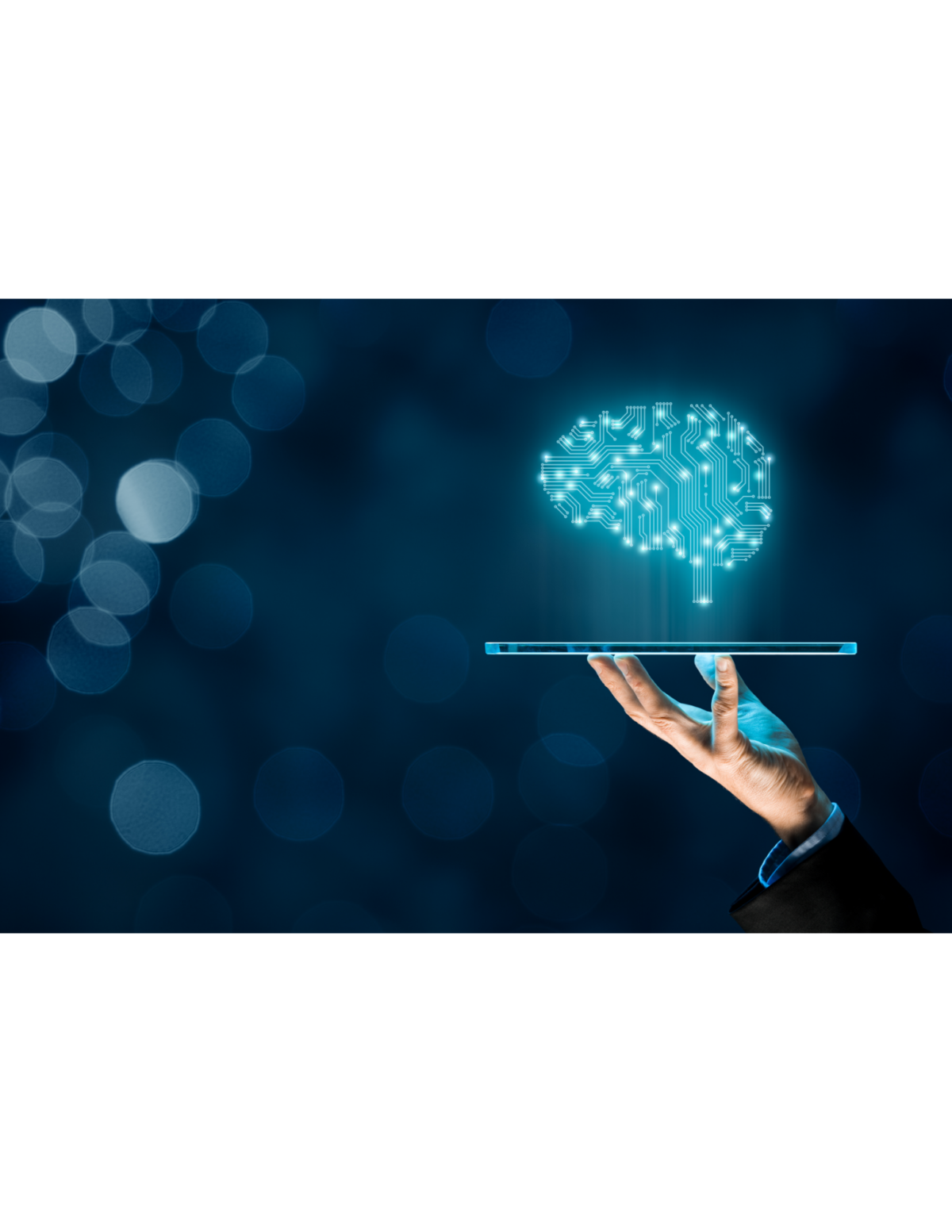On this episode of Transformation Realness, I’m sitting down with Jason Scheckner, Senior Director of Business Strategy, and Ernest Ng, Senior Principal and Product Strategist, at HiredScore—now officially part of the Workday family. HiredScore is rewriting the rules of HR tech with their AI Talent Orchestration platform, moving beyond buzzwords to deliver tools that actually work.
HiredScore was doing some great work before being acquired, but now Jason and Ernest have the power of Workday’s ecosystem behind them to deliver even better value to clients.
“What’s been really fun for me at Workday is we’re not just a bolt-on piece that adds to the end of their skew list,” Jason says, “but rather, Workday is looking at HiredScore as something they can integrate throughout their product.”
We get into how HiredScore evolved from basic matching and scoring to becoming the orchestration powerhouse it is today, what it means to partner with Workday, and how they’re driving iconic outcomes for their customers. If you’re ready to hear what’s really possible when AI works for you instead of against you, this one’s for you.
Find the Harmonies in Your Current Tech
HiredScore didn’t show up with just another limited use platform — their vision is much bigger than that. They’ve spent the last decade redefining what it means to deliver outcomes in talent management. “The world doesn’t need another platform, doesn’t need another system,” Jason says. “Orchestration is the opportunity to make the systems, the tools that people have, more successful.”
At its core, orchestration is about connecting the dots—between systems, data and decisions—so recruiters and HR teams can focus on the work that matters most. “We have an opportunity to transform how business is done, and how HR is done, in a real material way,” Ernest says, “not just making things a little bit faster, a little bit easier to do, but really transforming it with AI.”
Take HiredScore’s Fetch feature, for example. It’s like having an AI-powered treasure hunter digging through your ATS to rediscover talent you already have but forgot about. Instead of starting every search from scratch, Fetch helps recruiters surface qualified candidates in seconds. That’s a game-changer for overwhelmed teams juggling too much at once.
And orchestration isn’t just for recruiters. It’s about creating workflows that make everyone’s life easier, from hiring managers who need real-time insights to employees looking for their next big opportunity.
Create Impact That’s Iconic
Let’s talk about HiredScore’s secret sauce: iconic outcomes. This isn’t just about automating tasks or adding some shiny AI bells and whistles. It’s about delivering outcomes that are so high-impact, so transformative, they feel iconic.
Jason is especially sensitive to meeting the needs of non-HR persona, such as hiring managers. They’re not HR pros, but they’re constantly in the thick of HR workflows. If you’re running a talent strategy and missing this key group, you’re leaving value on the table. “Your processes run through your managers,” Jason explains. “If you want to deliver great outcomes to your org and you have thousands of managers you’re interacting with, and you miss that persona, that’s a big miss.”
Iconic outcomes aren’t just about making recruiters more efficient or surfacing talent faster—though HiredScore crushes that, too. It’s about enabling managers to make better decisions without the frustration of clunky tools or outdated processes. The AI orchestration layer makes everything flow, connecting data, processes and people to drive results that aren’t just good—they’re game-changing.
Contribute to a Bigger Solution
Here’s a hot take: the best HR tools aren’t built in isolation—they’re co-created with the people who actually use them. That’s exactly how HiredScore approaches innovation, and it’s one of the reasons their partnership with Workday is making waves. “It really shows with that co-innovation where you’re actually digging into their processes, understanding their pain points, really trying to figure out what their outcomes that they’re trying to achieve,” Ernest says.
This isn’t about throwing generic solutions at customers and hoping they stick. It’s about sitting down with recruiters, hiring managers, and HR leaders to really get into the weeds of their workflows. What’s slowing them down? What’s keeping them up at night? From there, HiredScore and Workday design tools in collaboration with users, making sure every feature actually solves a real problem.
And the benefits go beyond the product. “It’s also leading to better relationships and trust that we can build with the customer as well,” Ernest says. By rolling up their sleeves and working alongside their users, HiredScore and Workday are creating more than just software—they’re building a community of trust and collaboration.
People in This Episode
Transcript
Kyle Lagunas:
Hello, my little blueberries and welcome back to Transformation Realness, the only show all about people who are doing their best to make the world at work less shitty and have the guts to share their story: the good, the bad, and most of all, the real. This podcast is produced in partnership with Rep Cap and hosted by yours truly, the ever inquisitive and delightfully direct, Kyle Lagunas, Head of Strategy and Principal Analyst at Aptitude Research, the leading boutique research firm covering HR tech and transformation. You’re welcome.
Now hold onto your headphones because this isn’t just any season of Transformation Realness. Oh no, my friends. This is something extra special. I’m thrilled to kick off a brand new miniseries, “Built on Workday: The Birth of the New HR Tech Ecosystem.” Here’s the deal. For years, Workday has been known for its tightly controlled unified platform, but the winds of change are a-blowing and Workday is leaning all the way into collaboration, opening up their ecosystem and inviting innovation to the party.
And trust me, the HR tech world is abuzz. For those of us who live for those behind the scenes shifts that change how we work, this is the equivalent of a front row seat to a Beyonce concert. The idea for this series has been brewing for a while and yeah, I’ll just go ahead and say it. I’ve been nudging Workday to embrace this kind of ecosystem strategy since way back in 2016 — and receipts are available upon request, honey. So when they rolled out the red carpet for partners like Paradox, Lightcast, GoodTime and HiredScore, and doubled down on platforms like Extend to empower customers with innovation, I knew it was time to dig in.
Over the course of this miniseries, I’ll be talking to some of Workday’s most strategic partners: the game changers, the innovators, the why didn’t we think of that sooner problem solvers about what this bold new ecosystem strategy means.
We’ll unpack how collaboration is driving real innovation and talent acquisition, workforce planning and skills transformation and why it’s about more than just integrations. It’s about building a future where tech actually empowers HR and talent teams to drive business outcomes without getting buried in complexity. And the best part, all of this was recorded live from the back of Workday’s Forever Forward Bus, fully equipped for audio and video podcasting. That’s right, girlies. You’ll be able to catch all these incredible conversations in their fullest glory on the Transformation Realness YouTube page. So go ahead and like and subscribe if you haven’t already because this series is one you don’t want to miss.
All right, so what can you expect? First up, we’re diving into AI driven Talent Orchestration with HiredScore. We’ll talk about how they’re helping recruiters do more with less and enabling organizations to make smarter, faster workforce decisions.
Next, we’ll tackle interview chaos with GoodTime because let’s face it, interviews are often the wild west of hiring and they’re bringing some much needed structure and intelligence to the process.
Then we’re switching gears to chat big-picture with Dave Wachtel, GM of Talent Products at Workday. Dave will give us his inside scoop on Workday’s vision for this new ecosystem and what it means for customers and partners alike.
After that, we’ll hop back on the Workday Bus for a conversation with Lightcast about skills-based transformation, the buzzwords everyone’s talking about, but few are doing well. Spoiler alert, they’ve got some powerful insights about how skills can actually connect the dots between hiring, learning and workforce planning.
Finally, we’re closing out the series with Paradox, where we’ll dig into how conversational AI is transforming high-volume hiring, scheduling, and making candidate experiences a little more seamless. Trust me, this one’s a mic drop moment.
The bottom line, whether you’re an HR leader, a tech enthusiast, or just here for the tea, this series will give you an insider’s look at how Workday is changing the rules and why this matters for you. Expect bold insights, practical takeaways and a whole lot of sass because well, this is still Transformation Realness after all. So buckle up, grab your favorite beverage and get ready for some real talk about HR transformation. It’s Workday like you’ve never heard before. Let’s get into it.
What’s the tea, honeybee? For our first episode, we are exploring what happens when one of the most exciting AI Talent Orchestration platforms joins the Workday family. That’s right, HiredScore is now officially part of Workday and their combined vision for smarter, more agile talent management is nothing short of inspiring.
I’m sitting down with two brilliant minds from HiredScore, Jason Scheckner, Senior Director of Business Strategy and Ernest Ng, Senior Principal and Product Strategist. We talk about what happens when AI Talent Orchestration becomes more than a buzzword. We’re digging into how HiredScore’s helping organizations go beyond matching and scoring candidates to delivering what they call “iconic outcomes” which I absolutely love.
Think recruiter efficiency, workforce agility, and yes, total Talent Orchestration and with Workday’s platform and ecosystem in the mix, the potential to transform how work gets done has never been bigger. Grab your headphones or play this loudly and on public transportation. I don’t care. Your fellow passengers won’t mind at all, trust me. And anyway, let’s dive into a conversation that’s as inspiring as it is game changing.
Hello, besties. Welcome back to an extremely special episode of Transformation Realness, live coming to you from this sick bus. It’s actually a bus. We’re sitting in the back of it podcasting, thanks to our friends at Workday. They have a full ass studio set up for us and it’s kind of surreal. I’m sitting now with two of my absolute besties, my friends coming from HiredScore, a Workday company now. Jason and Ernest, welcome onto the show. You guys want to say hi?
Jason Scheckner:
Yeah, it’s great to be here. So excited to be with you always in Las Vegas, but especially here in the Workday bus and spending some time talking about what we’re up to.
Kyle Lagunas:
Yeah. Hi Ernest.
Ernest Ng:
Hi. Who the hell are you? I’m just grateful to be here and grateful to always have a conversation with you as well. So thank you for having us.
Kyle Lagunas:
Yeah, I love it too. Well, look, we’ve been working in this space for a long time, right? We know that a lot of these major HCM players, they are a bit of a walled garden. It’s really tough as best-in-breed providers to bring as much impact to your customers as you’d like without partnership. I thought it was really cool that Workday, which has also followed that historical same pattern of, we’re going to be really slow and really intentional with who we do let in. I wanted to talk for this miniseries about this major push into partnership. I just think it’s a different kind of market leadership and I know that customers are really excited about it. We saw it rising last week, just how many people were spending time in the partner booths and then of course, HiredScore is a shining example of that partnership because now, you are not just partners, you are workmates. You’re part of the team.
Jason Scheckner:
Yeah.
Kyle Lagunas:
How’s that been going?
Jason Scheckner:
It’s amazing. I mean, even if I just go back to when we looked at this and we said, “How do these companies come together?” I mean, first of all, nearly 60% of our customers were already using Workday.
Kyle Lagunas:
Yeah.
Jason Scheckner:
We’d been through that partnership process over several years. We had gone through certification and I think that felt good because again, to your point, Workday felt like they were taking that next step to allow key partners in that were impacting their customers. We felt like we were doing that. And I think what’s been exciting, probably maybe unexpected, is now on the inside, the unexpected integration like WoWs, the value alignment for instance, the leadership, the people, the direction of the company. I think those are the things, obviously, being acquired is exciting, but when you get on the other side and you’re actually going through it and you’re saying, “Actually this is a really good home for us.”
Kyle Lagunas:
Yeah.
Jason Scheckner:
And really exciting opportunity to continue our vision that we are building on for the last 11, 12 years.
Kyle Lagunas:
Yeah, I mean, I see it. I know you all really well and I know the Workday team really well. I do feel like there is really good cultural alignment. There really is just a strong entrepreneurial spirit here, a lot of really intelligent, very passionate collaborators. But you guys are having a lot of fun.
Jason Scheckner:
Yeah.
Ernest Ng:
Oh, yeah, for sure. One of the things that I think we all share, Workday and HiredScore, is really the focus on the customer, bringing great value to the customer. And I think that’s something that we’re seeing and we’re actually being able to create much more within Workday as well. And then as that partner community opens up and expands, I think the value as Workday and what we can bring to our customer expands as well. And so we’re able to and deliver that value for the customer.
Kyle Lagunas:
Ernest, were you a customer of HiredScore before you joined the team? I can’t remember.
Ernest Ng:
I was not a customer of HiredScore.
Kyle Lagunas:
Okay.
Ernest Ng:
I tried. Jason and I tried to-
Jason Scheckner:
Tried very hard.
Ernest Ng:
Very hard-
Kyle Lagunas:
It’s like moving mountains-
Ernest Ng:
… for a long, long time. It was like a seven-year journey of trying to get HiredScore into Salesforce, but eventually, we’ll do it.
Kyle Lagunas:
Yeah, I couldn’t remember. The reason I ask is, as you guys at HiredScore have had a long history of being willing and able to work with any partner in the space, even partners that might be a little bit competitive in nature, right? And so I can only imagine how, I mean, frustrating it would be to be like, “Look, we could do so many incredible things with you if you would only partner with us in more than just a standard partnership.” Which I think is really exciting about the program Workday’s building is those people that are consistently driving results for their shared customers, those that are consistently showing integrity and cultural alignment, that’s what’s driving that partnership. Getting them closer and closer because we have that. It’s built on trust, right? So it’s really cool. Well, let’s talk about what HiredScore actually does instead of just gushing over like, “We are really happy here.” I’m glad to hear it, but for those that don’t know, what is HiredScore? What do you guys do?
Jason Scheckner:
Yeah, I mean, so we’ve talked about it as AI Talent Orchestration, and that journey has been very interesting because you have this inflection point I think a few years ago with talent intelligence coming to market. And obviously, that can mean a lot of different things to people we’ve talked about.
Kyle Lagunas:
It’s a very ambiguous term. Yeah.
Jason Scheckner:
It can mean a lot of things, but I think if you asked the average person, they’d say, “Oh yeah, we know what talent intelligence [is].” And credit to Athena, who obviously isn’t with us today, but she really, when we made a decision-
Kyle Lagunas:
She’s just not here. She is still alive.
Jason Scheckner:
Oh, yeah. She’s alive.
Kyle Lagunas:
Oh, my God. [laughs]
Jason Scheckner:
I just meant not physically here. But when we looked at the market, there was this opportunity to become another platform and there were so many people going in that direction. And I think we said, and again, credit to the team, “The world doesn’t need another platform, doesn’t need another system. Orchestration is the opportunity to make the systems, the tools that people have, more successful. How do you make the people who use them smarter, faster, quicker? How do you make the data inside?” And that’s actually one of the great things about Workday is because it’s a platform, because of their data strategy, it’s actually a great home for us because we can build on top of the hard work they’ve done. And that is differentiated, in my opinion, so far from what I’ve seen. And so-
Kyle Lagunas:
I mean, as a product strategy for sure. I mean, I think a lot of people were leaning into “platform.” I’m doing air quotes over here to try and grow TAM, to try and grow, I don’t know, market cache. They thought if we call ourselves an AI powered enterprise level platform, it became meaningless.
But I do remember when Athena told me, “Hey, we are actually investing heavily. We’re building out a market leading integration layer. We want to be able to integrate with any application, with any vendor because that’s what our customers need.” And no one else was willing to do that. That’s platform, to me. You know what I mean? That’s what we really are talking about.
Jason Scheckner:
For sure. And so going back to what does that do then, right? I’m telling you what the name of it was, but what it meant for our customers is that we’re actually able to deliver these things. We talk about iconic outcomes. But okay, you’ve got Workday, you put HiredScore on top of it, maybe you have other vendors, maybe you’re betting heavy on Workday. It didn’t matter to us because again, our goal was to take whatever-
Kyle Lagunas:
Because you also had customers at Oracle, you have customers at SuccessFactors, you have customers…
Jason Scheckner:
And we’ll continue to do that-
Kyle Lagunas:
Yeah, yeah, yeah, absolutely.
Jason Scheckner:
… which is exciting. But what was interesting is, it was about taking whatever your bets were and putting the AI on top of it, the orchestration layer, and then driving the outcomes. And so for us, we call that iconic outcomes, Kyle. We were focused on, how do you augment the recruiter? How do you change how a hiring manager works? It’s one of these personas that we call it a non-HR persona, but they have to do a lot of HR work and your processes run through your managers. If you want to deliver great outcomes to your org and you have thousands of managers you’re interacting and you miss that persona, that’s a big miss.
Kyle Lagunas:
Yeah.
Jason Scheckner:
And so those are the types of things we are bringing on top of these solutions to employees. Meeting people in the flow of work was a big bet for us in the last couple of years. And so orchestration was about, take the data, take the observable processes, take the policies, take the personas, run AI on top of it, and then focus on driving the actual outcomes. And they have been huge wins for our customers. So that’s really what we’ve been up to and it’s been great.
Kyle Lagunas:
Well, I mean I actually do want to dig into this because what you said at the end, you’re having a really great time with your customers. You actually, I haven’t seen vendors that do as much co-innovation with their customers as you do. Your customer’s like, “Oh, can we orchestrate this? Can we orchestrate that?” Da, da, da, da. I mean, I think we looked at the product roadmap at Forward last year and there’s a whole bunch of new stuff, and I just love that you all were able to say, “Oh, and by the way, we’re already doing it with this customer who’s right over there if you have any questions for him, how it’s going. We’re here.” A lot of providers in the space like to talk about innovating for their customers, but they’re really not getting down on the ground and rolling up their sleeves. They’re not invited to that level of collaboration. You guys have built a lot of trust with your customers.
Ernest Ng:
Yeah, I think it really shows with that co-innovation where you’re actually digging into their processes, understanding their pain points, really trying to figure out what their outcomes that they’re trying to achieve. And with that, designing the process in collaboration with them. And it’s not just leading to better product, but it’s also, like you said, leading to better relationships and trust that we can build with the customer as well.
Kyle Lagunas:
Can I ask? I thought you guys were matching and scoring AI. I thought that’s all HiredScore was. When they announced the acquisition, there was just a lot of “meh.” I think from some detractors in the space, some real cynics that they’re like, “No, this isn’t that big of a deal.” The story that you all just talked about for AI orchestration, a lot of people I don’t think realize that this was part of the current delivering-
Jason Scheckner:
Totally.
Kyle Lagunas:
… vision. It’s not just future. So you guys are actually doing these things. How has joining the Workday organization helped to accelerate that vision, to get more awareness, to make that more than just ideas we have. You were already delivering, but I imagine now the scale of opportunity in front of you is massive, right? You have a lot more people raising their hands. Can we talk a little bit about, because that journey did happen actually very quickly, right? You were still selling matching and scoring, you were still selling Fetch, right? And those were great features that had a lot of material value for your customers. The story evolved really quickly, right? I’m thinking like 2021, 2022.
Jason Scheckner:
Yeah, for sure. What’s interesting about it, and actually connects to the prior question too, about how do we partner. What’s interesting is, well, two things I’ll say. A) Surprisingly, recruiter efficiency is still a problem. So even the things that we built and took to market 10 years ago, are still really relevant. I don’t think it’s like, we’re just catching up with the late bloomers now. It’s really still an issue in companies. Hiring needs change and their volumes change and they are profitability problems-
Kyle Lagunas:
And the market and the world that we live in has completely changed.
Jason Scheckner:
Totally.
Kyle Lagunas:
Yeah.
Jason Scheckner:
Yeah, and the systems change, the data changes and the priorities change. So what’s interesting is the core thing that we start out with is still really relevant and it’s exciting to see Workday bringing that to market and how people are responding even to the things we’ve been doing forever and the scale that we can do that at. That’s been amazing. But to your point, I think a lot of people didn’t know the other things we were doing because the name sort of begets, “Hey, we’re doing recruiting work.”
Kyle Lagunas:
No one was even talking about orchestration two years ago.
Jason Scheckner:
Correct. So now, what’s interesting, and this goes back to the collaboration piece is, when you do a great job and you earn their trust and you make their recruiters more efficient, then they go, “Hey, could you help me with this problem?” And that’s where Fetch came… Fetch became, “Hey, we are scoring your candidates. Can you also help us find candidates?” So that’s easy. We turn the AI at your rediscovery… Yeah. Then people, “Well, you did that with our external candidates, can you do that with our employees?” Then all of a sudden, you’re solving internal mobility problems and “Hey, you’re helping our recruiters be way more efficient. Can you help our managers change their work?” And so we move from recruiter effectiveness-
Kyle Lagunas:
You’re working with our full-time workforce, could you help us with our contingent workforce?
Jason Scheckner:
Contingent labor. Exactly. And so you’re seeing it. And so now today we have an entire- what’s exciting is, we had an entire suite of solutions prior to the acquisition. And what’s been really fun for me at Workday is, we’re not just, in my view, we’re not just like a bolt-on piece that adds to the end of their skew list, but rather, Workday is looking at HiredScore as something they can integrate throughout their product. So think about Workday recruiting, think about candidate engagement, messaging, think about talent optimization, think about VNDLY and the contingent side, to your point. Think about workforce planning.
Kyle Lagunas:
Workforce planning maybe.
Jason Scheckner:
And then we’re not even talking about the Fin side yet, who knows? But then the HR side-
Kyle Lagunas:
Don’t go over there. It’s boring.
Jason Scheckner:
Yeah. But on the HR side, there’s so many endless possibilities and that’s what’s really exciting for us. But to your point, it’s about building on those use cases and all the things that we’ve been able to do, and those are the outcomes that our customers know and love us for and probably doesn’t get enough coverage actually.
Kyle Lagunas:
Well, Ernest, I know that you and Athena had been really deep thought partners and really collaborating a lot on what is this new vision, I mean, before this acquisition. How do you find that your work is evolving? Are you feeling like a proud papa that all of these concepts and talk tracks that you’ve been working on are taking flight across all of Workday? Or are you feeling like, “Oh, now I’ve got a whole lot more evangelizing than I have to do internally?” How’s your role evolved?
Ernest Ng:
I mean, personally, I feel like a kid in a candy store. I mean, the opportunities are endless, just in terms of with the power of the platform, with the customer base that we have, with all the ideas coming in, we can really have an opportunity to transform how business is done and how HR is done.
Kyle Lagunas:
Yeah, in a real material way.
Ernest Ng:
In a real material way, not just making things a little bit faster, a little bit easier to do, but really transforming it with AI. I think that is the opportunity in front of us. And with all of these AI technologies that are out there that are developing really quickly, now the possibilities become wide open, right?
Kyle Lagunas:
Sure.
Ernest Ng:
And so I think we’re getting so much interest in AI, and I think for us, we really need to-
Kyle Lagunas:
Focus.
Ernest Ng:
What are those core use cases that can really impact and drive value into the organization and for the end users? And that’s really what we want to focus on.
Kyle Lagunas:
Yeah. I’m glad to hear it. I mean, focus is going to be really important, but I really like this concept you guys keep throwing out of iconic outcomes, that is the North Star. Let’s drive impact. So one of the questions I’m having for everybody, this theme for this show is, what are we building on Workday?
Jason Scheckner:
Yep.
Kyle Lagunas:
And I want to know what are some exclusive capabilities that maybe the Workday customer base has access to with HiredScore?
Jason Scheckner:
Yeah, so first of all, obviously, we have our certified integration on top of Workday, it’s world class. Workday is allowing us to continue to leverage those other third-party integrations, so none of that’s going away. I just want to make sure everybody knows that.
Kyle Lagunas:
Yeah.
Jason Scheckner:
But for Workday specifically, I think what the future holds are a couple things. One: customers already know and love HiredScore, excited about HiredScore, can look forward to a lot of the elements starting to show up inside of Workday natively.
Kyle Lagunas:
Yeah, because currently you guys… I mean, because I was a customer of HiredScore in the past. I remember that in recruiting, in the Workday recruiting, I could see the match score for applicants in the rack. But that was an iframe, right? That was…
Jason Scheckner:
Yeah, good question. So for all of our customers, all of our systems, we always put the grade inside the ATS natively. And that’s partly-
Kyle Lagunas:
But I couldn’t get the explainable AI from it, right?
Jason Scheckner:
Exactly, right.
Kyle Lagunas:
I could just see that score.
Jason Scheckner:
And so that grade was typically not only for user experience but also for, we’re big on responsible AI, you know that.
Kyle Lagunas:
Mm-hmm.
Jason Scheckner:
So it was for auditability, record keeping, any kind of reporting the customer needed to do. But yeah, we always had our UI on top of it, which is always bi-directional and we’ll continue to maintain that. But we’re starting to move some of those elements actually into Workday. So coming in this spring, for instance, customers will have access to candidate rediscovery. We call that Fetch inside of Workday. So that’s again, Safe Harbor that’s coming, I think R1 for Workday.
Kyle Lagunas:
Did you just say Safe Harbor?
Jason Scheckner:
Yeah, I said Safe Harbor. It’s a new term.
Kyle Lagunas:
This is the press, baby. Yeah. No, that’s exciting. I mean, you guys are delivering right away.
Jason Scheckner:
Yeah, right away. Fetch was such an easy choice to focus on right away because at the moment-
Kyle Lagunas:
Just so much utility in it.
Jason Scheckner:
…of the point of rec, which you’re already doing in Workday, the very next thing you do is you have a lead list and it’s right there inside of Workday, and it’s all the people that are already inside of your Workday. It could be your Workday recruiting, it could be candidate engagement, your prospects, your pools. So we’re connecting to those parts as well and rediscovering across all those object types to bring those people.
We can also connect to the HM side on internals. So again, there’s some really exciting things that’ll be available to customers. And then we are starting to connect to other talent acquisition objects. So we talked about pools, prospects will be available. We’ll have some bi-directional things there. Some of the native messaging that already exists inside of Workday that we didn’t leverage before, that’ll be available to customers. If they want to SMS, outreach to a prospect, a Fetch lead, they can do that now through Workday, which is really exciting.
Kyle Lagunas:
Oh, yeah.
Jason Scheckner:
We’re going to have, on the talent mobility side-
Kyle Lagunas:
Are you guys doing any orchestration there? Because I do remember looking at one of the use cases you had was, we’ve already reached out to these candidates. Or you could click and say, “Yes, reach out to these ones,” like a rec is open, let’s go ahead and get this started. Are you guys doing that in Workday too or is that just a HiredScore feature?
Jason Scheckner:
You mean in terms of following up with a candidate?
Kyle Lagunas:
Yeah, you mentioned SMS. I’m thinking, can I go ahead and kick off an engagement campaign right at the point of rec?
Jason Scheckner:
Yeah. So what’s exciting is, with candidate engagement now, which is the solution Workday has for non-applicant candidates, that’s a really nice way of saying CRM-lite. CRM. Well, actually, surprisingly, and I want to say this because I wasn’t here to say this, but I’m actually really impressed with it. I think my expectation coming in was, hey, maybe it is that, and by the way, I think customers are going to be pleasantly surprised that it actually has a lot of functionality. I’ve had a few customers move over into it.
Kyle Lagunas:
Okay. I don’t know…
Jason Scheckner:
I’m telling you.
Kyle Lagunas:
I mean, hey, for those that don’t know, I come from CRM. I worked at Beamery for two years actually and partnered with the HiredScore team. And I think that is where I see immediate value of bringing in a solution like HiredScore. It’s going to accelerate the utilization of these other capabilities that they have because of the intelligent automation that you are able to use.
Jason Scheckner:
Totally.
Kyle Lagunas:
Yeah. It’s going to be really interesting next CRM cycle.
Jason Scheckner:
And by the way, so just on the thing about the CRM side, we’re going to do the same things on the mobility side. So one of the other things coming up soon is HiredScore will be offering our AI for talent mobility solutions. So that connects to the internal employees. So we’ll be able to rediscover those. We’ll be able to outreach to employees, contact their managers and let them know that their employees might be eligible for opportunities. And we’re going to actually connect that to Workday’s talent optimization. So things like Career Hub will actually have bi-directional connection with HiredScore and we’ll actually, I think in the near future, even be offering HiredScore based recommendations natively inside of the Workday Career Hub.
Kyle Lagunas:
See babe, this is why I said that this was the biggest deal since Oracle bought Taleo. Because I really do see the utilization of talent and workforce applications in Workday being rapidly accelerated with a solution, like a deeply embedded solution like HiredScore. It’s really exciting for you guys. I’m sure the Workday teams, product teams are really excited, but I bet you their customers, those HR and talent leaders that are working tirelessly to try and improve talent retention, try and improve internal mobility rates, trying to… They’re like, “Oh, thank God. I don’t have to do all of this heavy lifting.” Right? I mean, it’s really solving for-
Jason Scheckner:
And by the way, sneak peek.
Kyle Lagunas:
Yeah? Is this under embargo because we’re literally on a podcast.
Jason Scheckner:
Safe Harbor.
Kyle Lagunas:
Yeah. I don’t know what that means.
Jason Scheckner:
No, we’re even connecting, we’re already starting to work on connecting to VNDLY. So you talked about the contingent side?
Kyle Lagunas:
Yeah.
Jason Scheckner:
How long are people going to talk about total talent? But that’s the power of a platform like Workday, where you actually have a recruiting system, you have contingent talent. We’re going to actually be able to look at an employee, a contingent worker and external talent, and start to say, “Who’s the right talent for this role, regardless of the talent type, and how do we connect that across the different data sets?”
Kyle Lagunas:
Oh, imagine getting even further than that, where it’s like, “Oh, we opened a rec. This is a high priority role or skillset. I’m going to immediately put out somebody from contingent so we can close this gap right away. In the meantime, we have these candidates we can start moving with.” That is, that’s total talent.
Jason Scheckner:
It’s not science fiction.
Kyle Lagunas:
Oh, no. I mean, that’s a use case you could actually deliver, right?
Ernest Ng:
It’s actually not very far off.
Kyle Lagunas:
I know.
Ernest Ng:
You just think about-
Kyle Lagunas:
It’s exciting.
Ernest Ng:
… the power of adaptive planning. You can build these plans, you can actually put-
Kyle Lagunas:
And then activate it.
Ernest Ng:
Exactly. Yeah. You can actually activate these workforce plans and put them into the system. Let the agent run. Let the agent really work through that and actually deliver the outcomes that you’re looking for.
Kyle Lagunas:
Super cool. You guys are making it really hard for me to be industry agnostic, but whatever. Everybody knows I have a big crush on you. All right, cool. Well, before we wrap, anything that you guys want to make sure that we leave with?
Jason Scheckner:
No, I think hopefully as people are listening, they’re hearing the excitement. We have what it means to be, I think, Workday’s differentiated and I think we feel like it’s a great home for us to be able to add value to people and have a second look back at what’s actually happening. And by the way, I know you’re going to talk with Workday more, but that discounts, by the way, all the work they’re doing on their partnership ecosystem, their extensibility, their ability to build on Extend. I’ve been blown away by that. I mean, as a third party coming in, what customers are doing on Extend is so cool to see and the solutions they’re building. So it’s exciting times. We’re really optimistic about the potential.
Kyle Lagunas:
I am too. I mean, look, I track innovation for my job, but I also am a little bit different as an analyst because I feel like the ethos of companies is part of leadership too. That’s part of not just what are you building, but who are you? And all of the partners that we’ve talked to this week, there really is just this, I don’t know, deep sense of connection. We’re coming together to solve problems together.
Jason Scheckner:
Yep.
Kyle Lagunas:
There is co-opetition in the space and everyone’s acknowledged it. They’re really comfortable with this. And I, I don’t know, I just feel like that is super unique. I want to see more of this, which is why I’m kind of leaning into this conversation-
Jason Scheckner:
I love that.
Kyle Lagunas:
… this week. People are like, “Oh, you love Workday.” I’m like, “No, I want to put a spotlight on what’s happening here,” because any one of these other major vendors can be doing this same thing and should. The customer matters more than anything else. They have been through the wringer the last several years. Let’s put their needs before anything else. And guess what? You’re going to make a ton of money if you can do that. It’s not just like, “Oh, we’re going to be totally idealistic.” It’s like, no, this I do really think is the ethos of partnership as a customer to solution provider that we need to see more of. I’m really excited about it. Thank you guys for coming on the show.
Jason Scheckner:
Always a pleasure to be with you.
Ernest Ng:
Pleasure. Sounds good. Thank you.
Kyle Lagunas:
And that is a wrap. A huge thank you to Jason and Ernest for joining me and giving us an inside look at how they see AI Talent Orchestration rewriting the rules of HR and talent management.
Here’s what I’m walking away with. It’s not enough to just automate or optimize. The future is about delivery, outcomes that matter. Whether it’s helping recruiters to do more with less, empowering managers with better data, or enabling organizations to make smarter workforce decisions.
And thanks to HiredScore’s deep integration with Workday, customers, I think, are getting access to a whole new level of capability and insights. Big thanks to our friends at Workday for hosting this episode, and to you, my fearless listeners for tuning in. I’ll be back soon with more bold conversations and stories about the people, platforms and ideas driving transformation in the world of work.
Until next time, stay curious, stay focused, and keep pushing for those iconic outcomes. Catch you on the next one.
